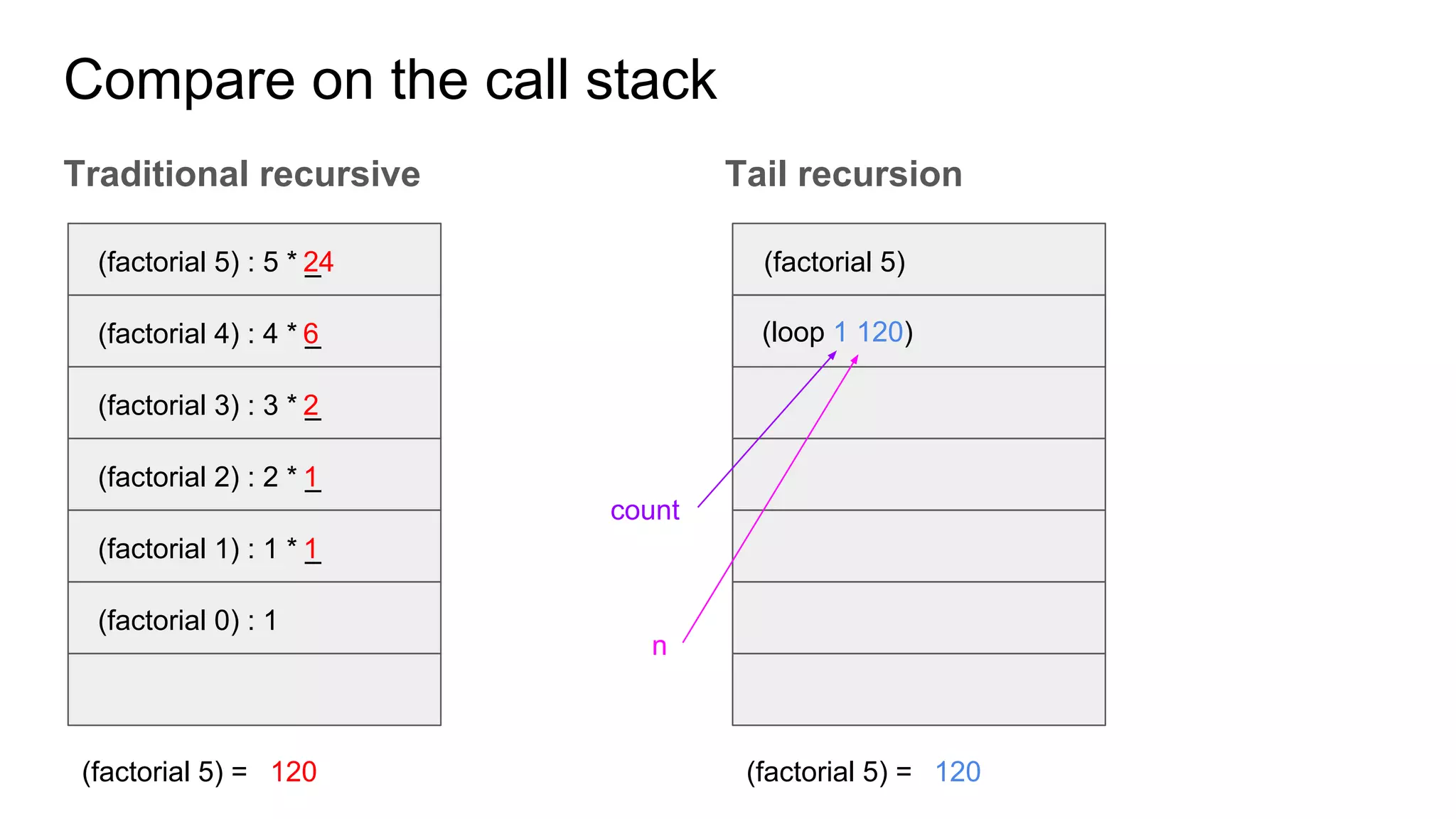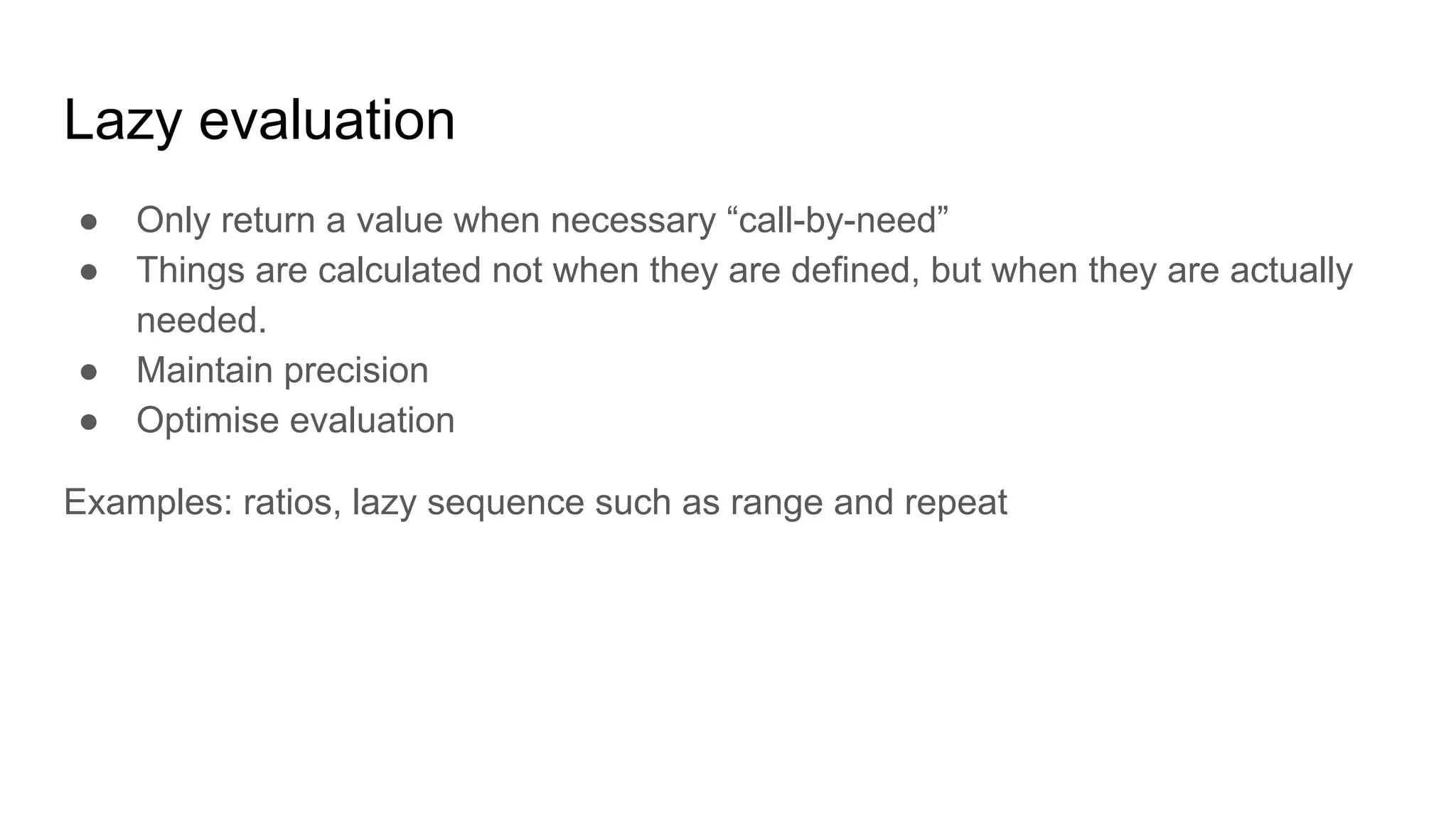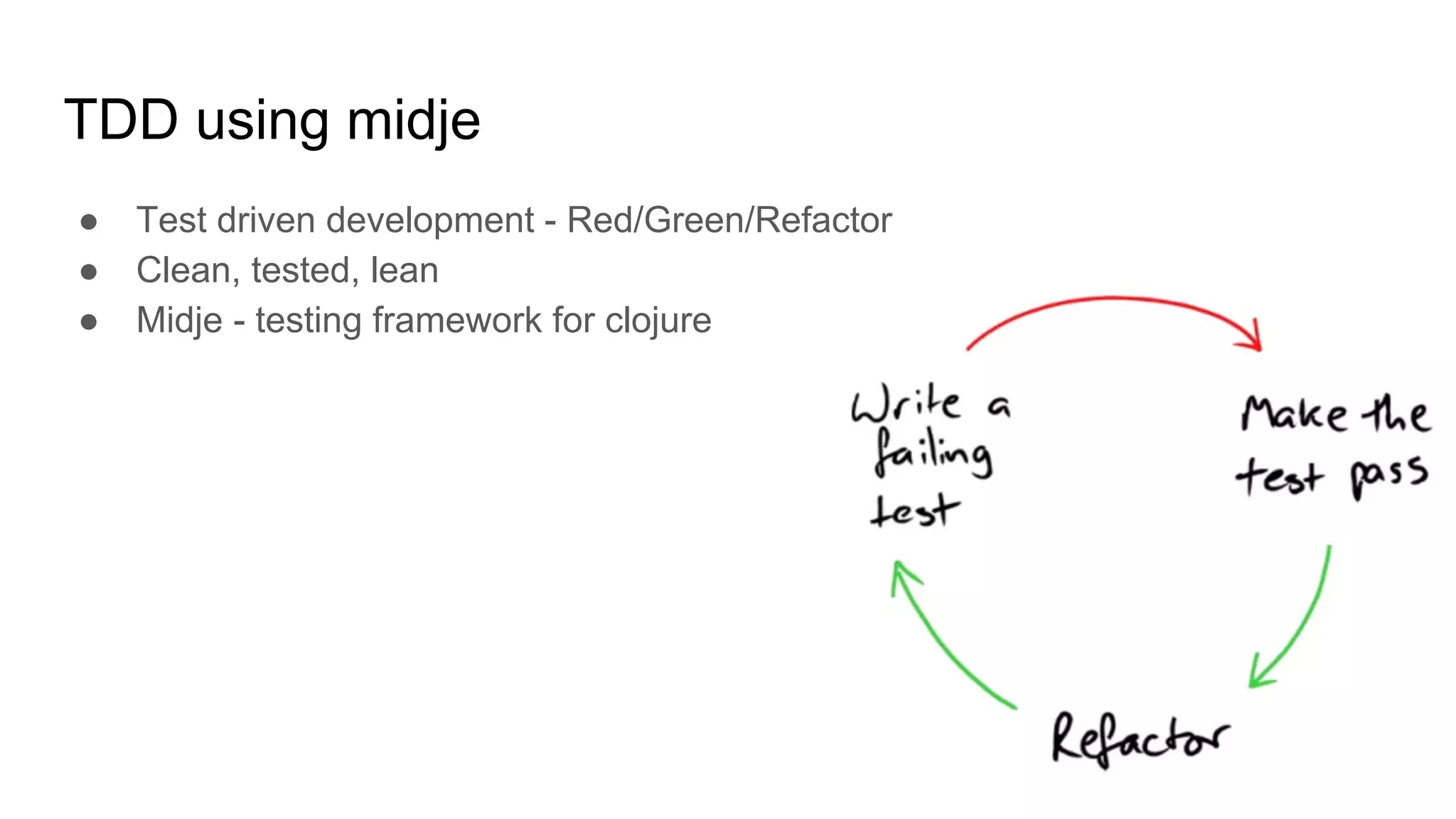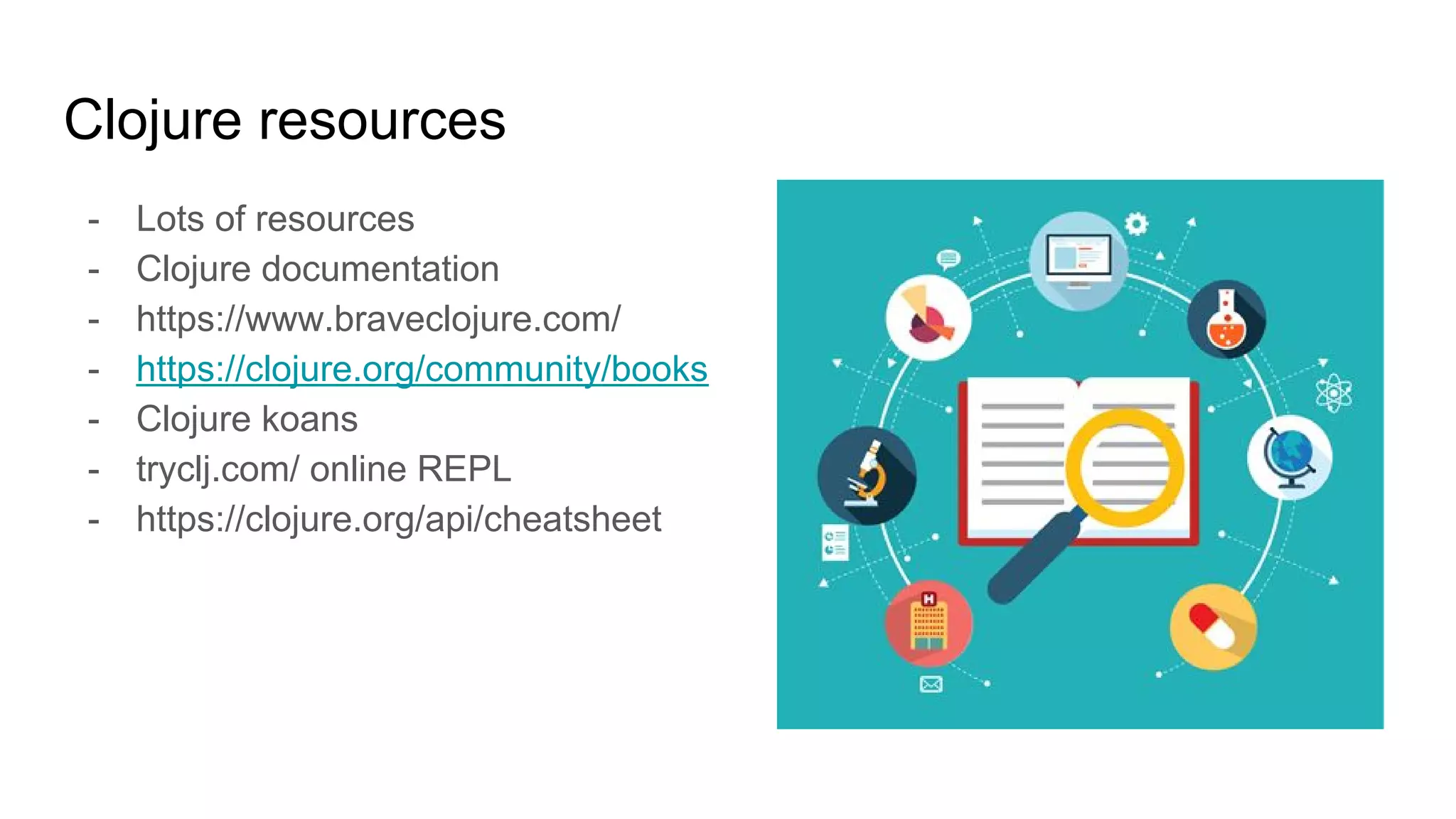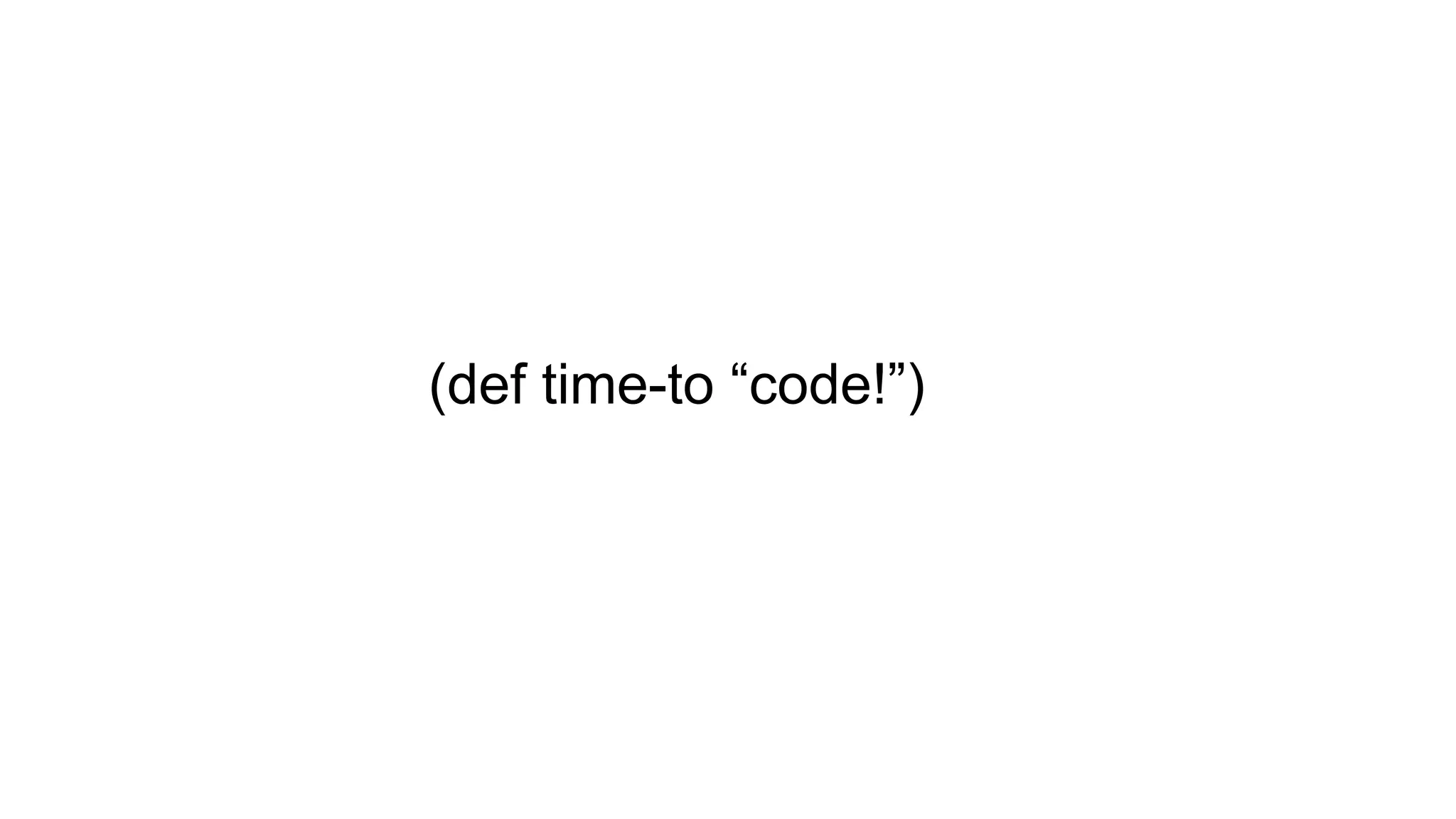This document provides an overview of functional programming concepts using the Clojure programming language. It compares imperative and object-oriented programming to functional programming. It then discusses Clojure syntax, first-class functions, pure functions, immutable data structures, recursion, lazy evaluation, and testing in Clojure.
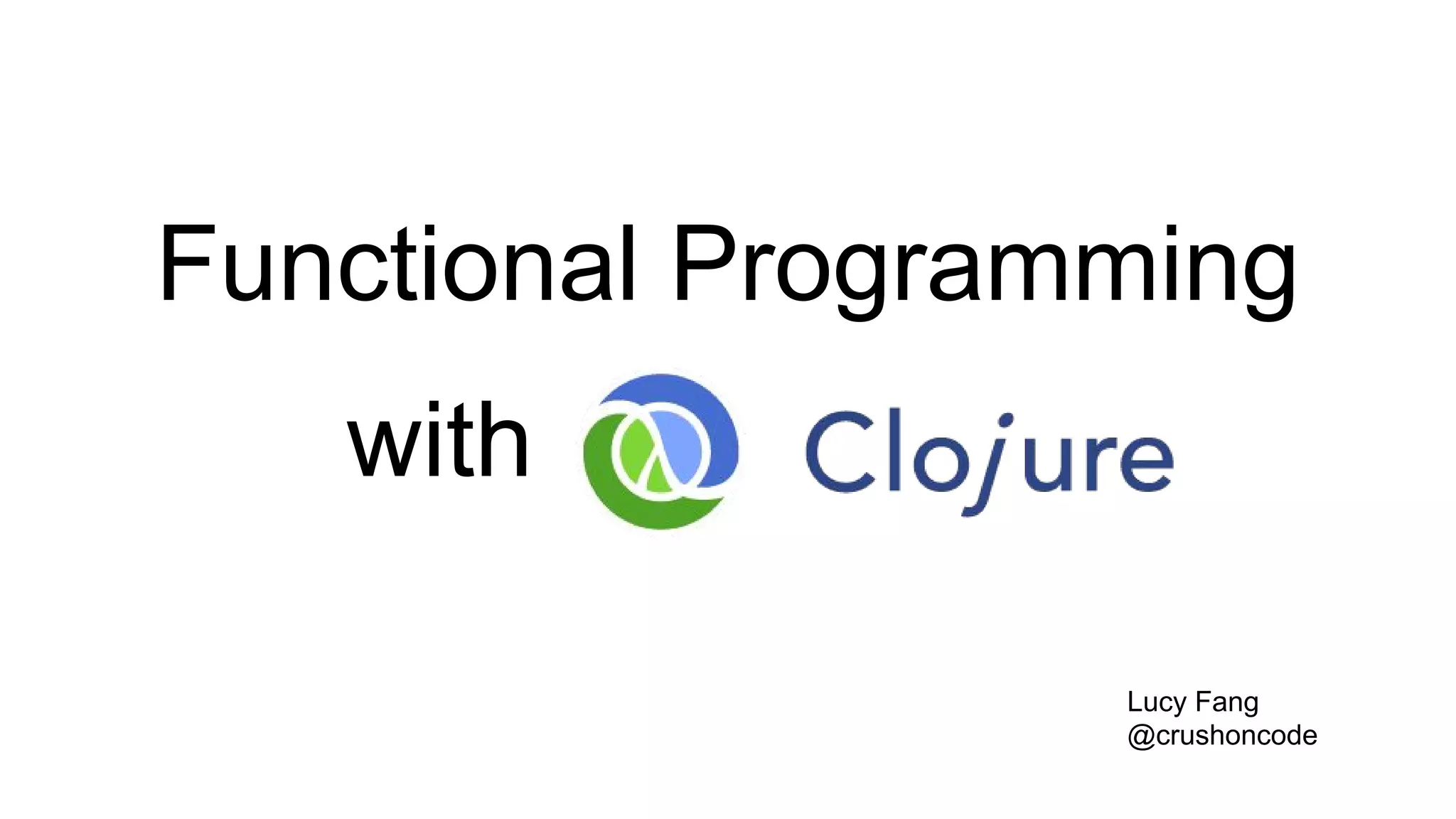
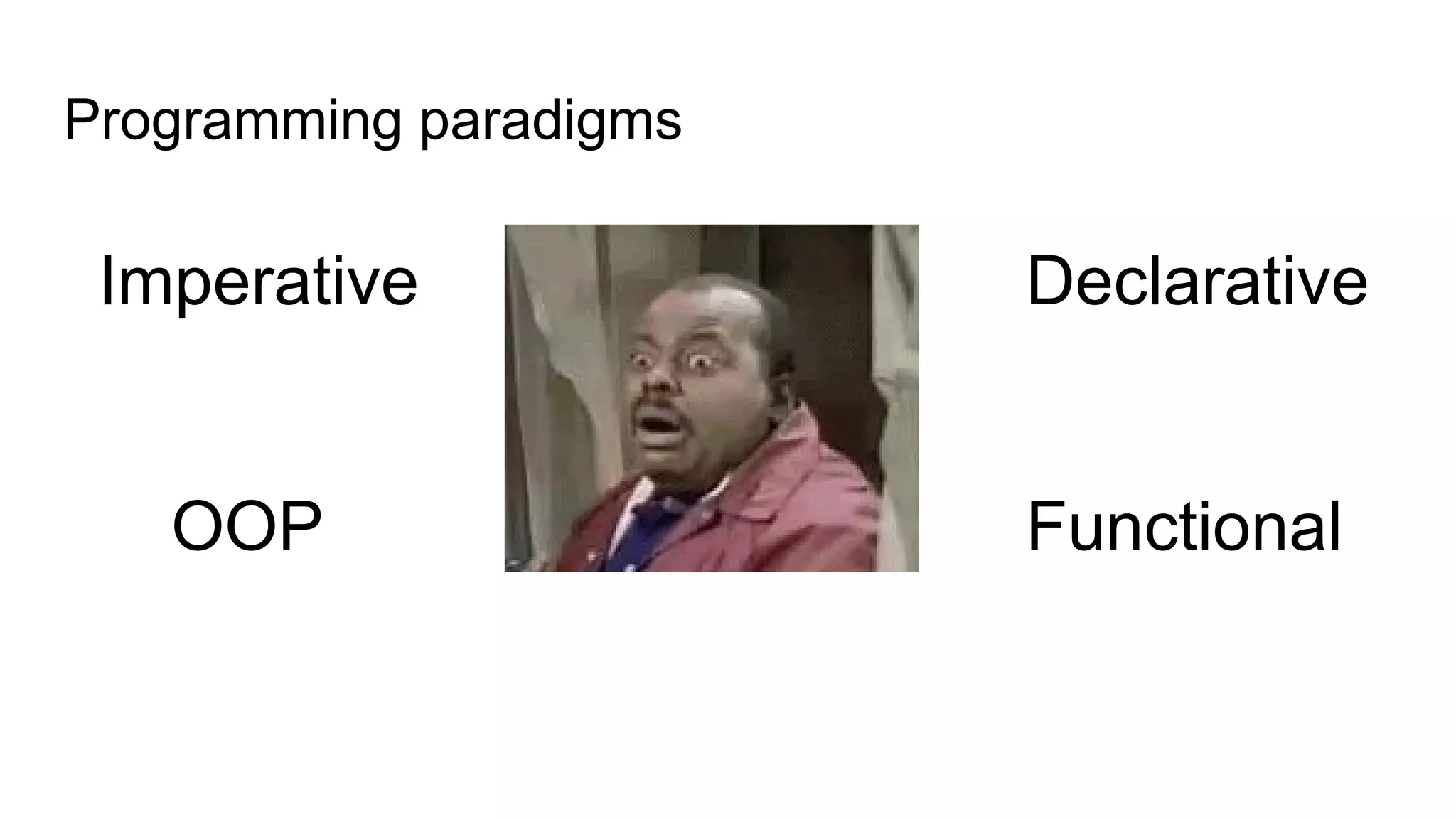
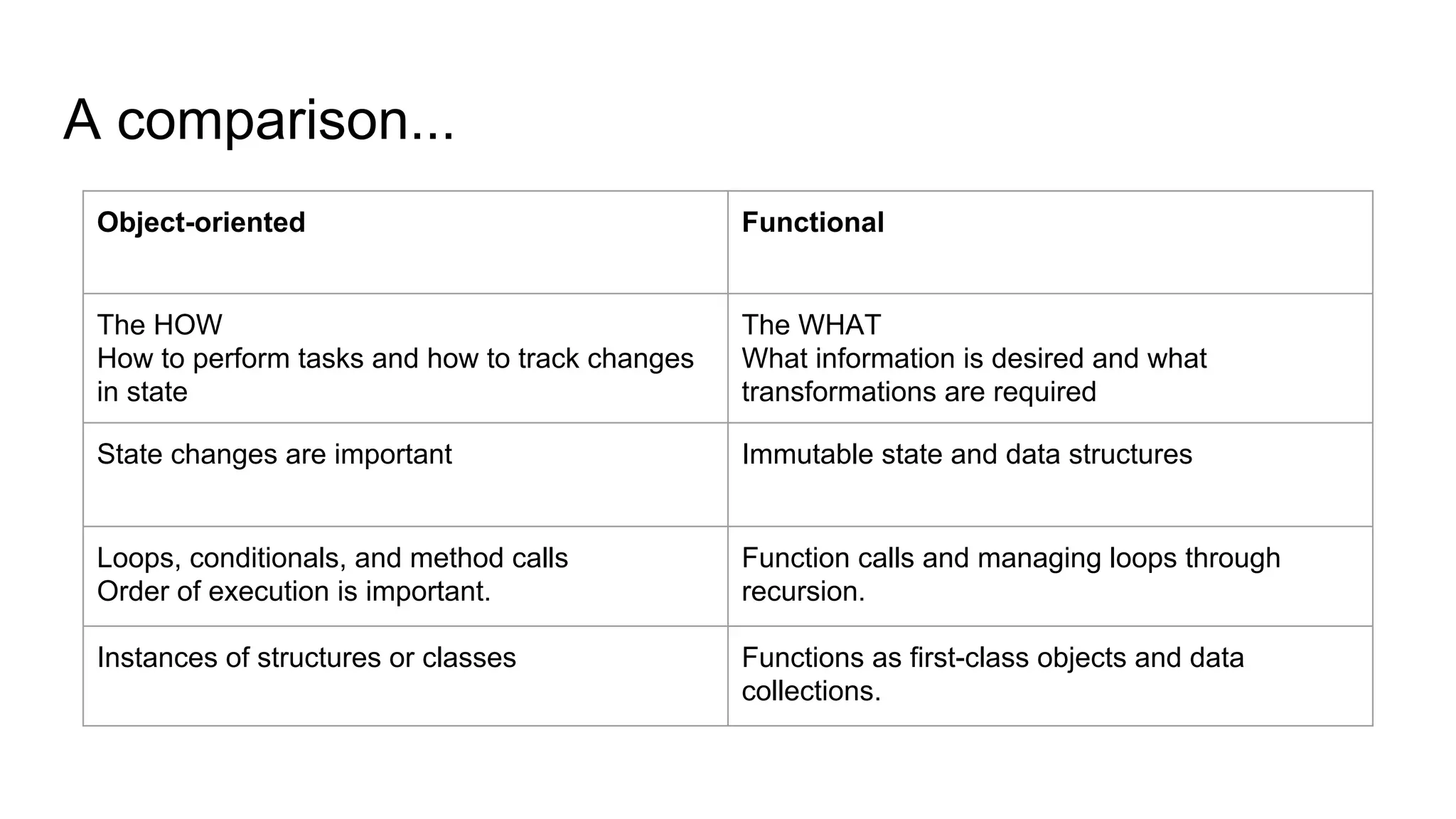

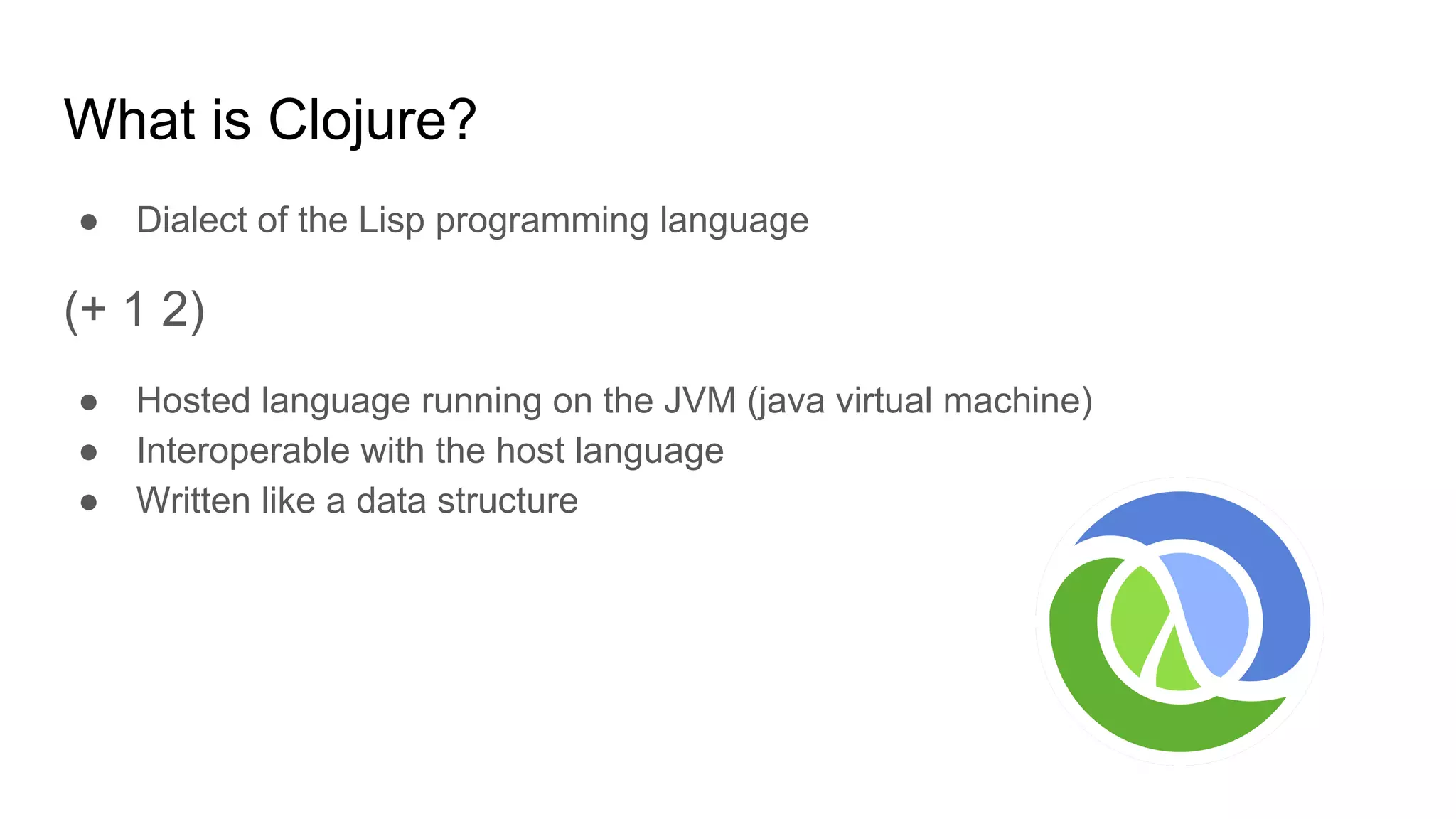
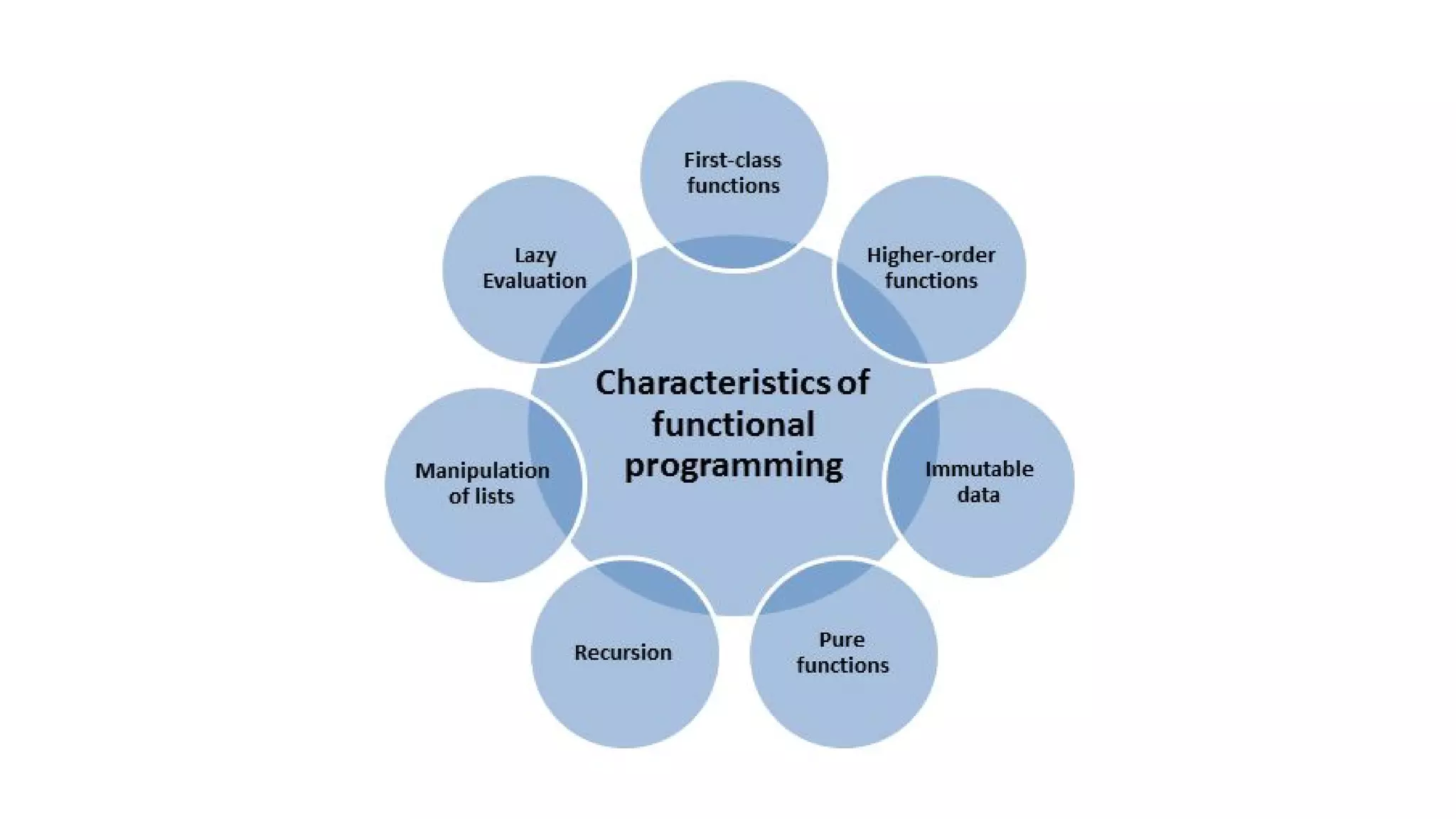
![Basic Clojure Syntax
Define a value or data e.g. (def name “value”)
Define a function e.g. (defn functionName [argument] (behavior))
Binding a value e.g. (let [value])
Collections:
(list 1 2 3) => ‘(1 2 3)
(vec ‘(1 2 3) => [1 2 3] //similar to an array, zero indexed
(set ‘(1 2 1) => #{1 2} // set of unique values
(map + [1 2 3] [4 5 6]) => (5 7 9)](https://image.slidesharecdn.com/functionalprogrammingwithclojure-171025113057/75/Functional-programming-with-clojure-7-2048.jpg)
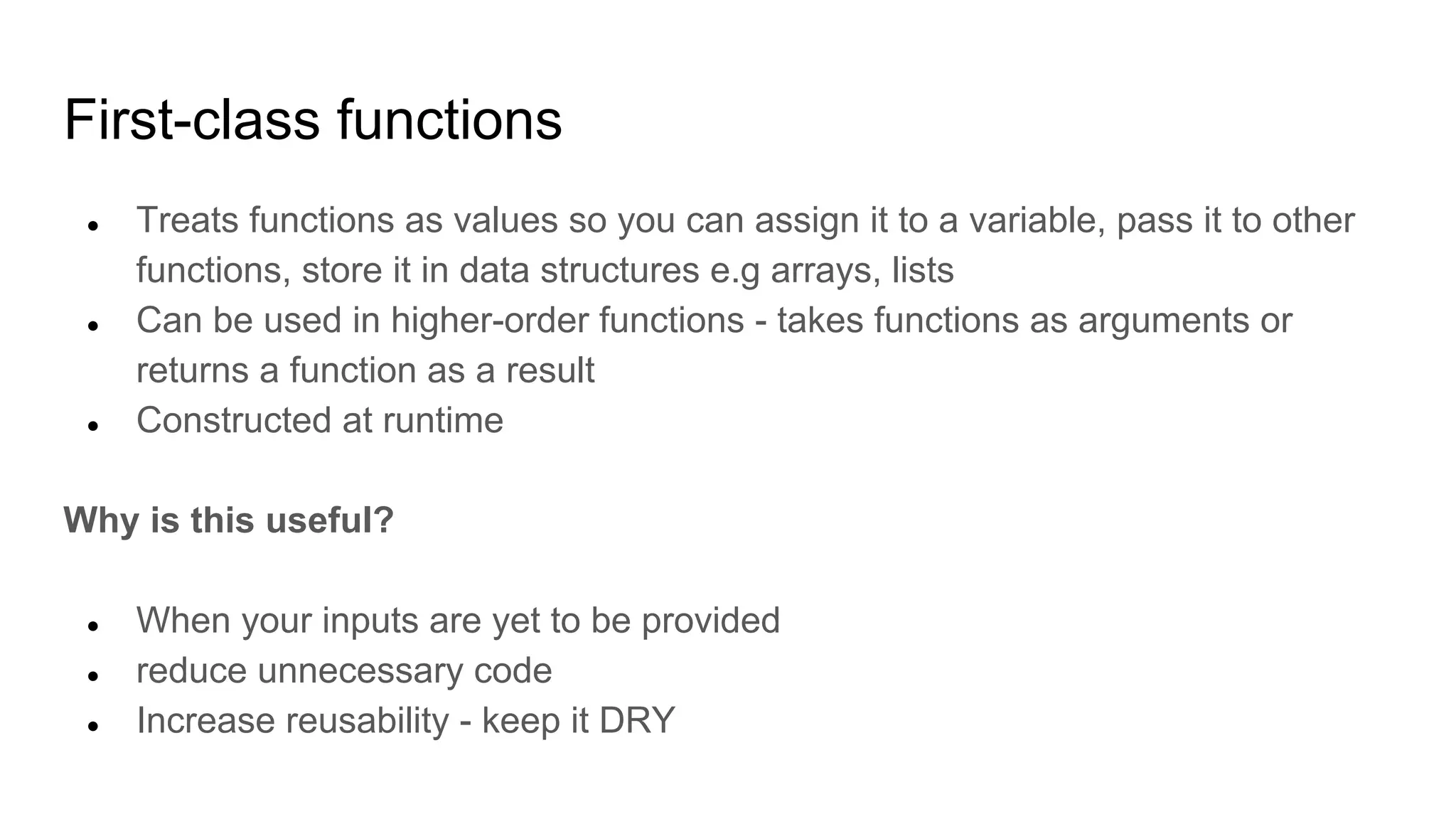
![First-class functions and higher order functions
(first class function)
=> (def double-it (number)
(fn [number] (* 2 number))
(higher-order function)
=> (map double-it [1 2 3])
=> (2 4 6)
(def double-it (partial * 2))
same as
(fn [number] (* 2 number)) or
#(* 2 %)](https://image.slidesharecdn.com/functionalprogrammingwithclojure-171025113057/75/Functional-programming-with-clojure-9-2048.jpg)
![Function Composition
Takes a set of functions and returns a function that is the composition of those
functions.
(filter (comp not zero?) [0 1 0 2 0 3 0 4])
=> (1 2 3 4)](https://image.slidesharecdn.com/functionalprogrammingwithclojure-171025113057/75/Functional-programming-with-clojure-10-2048.jpg)
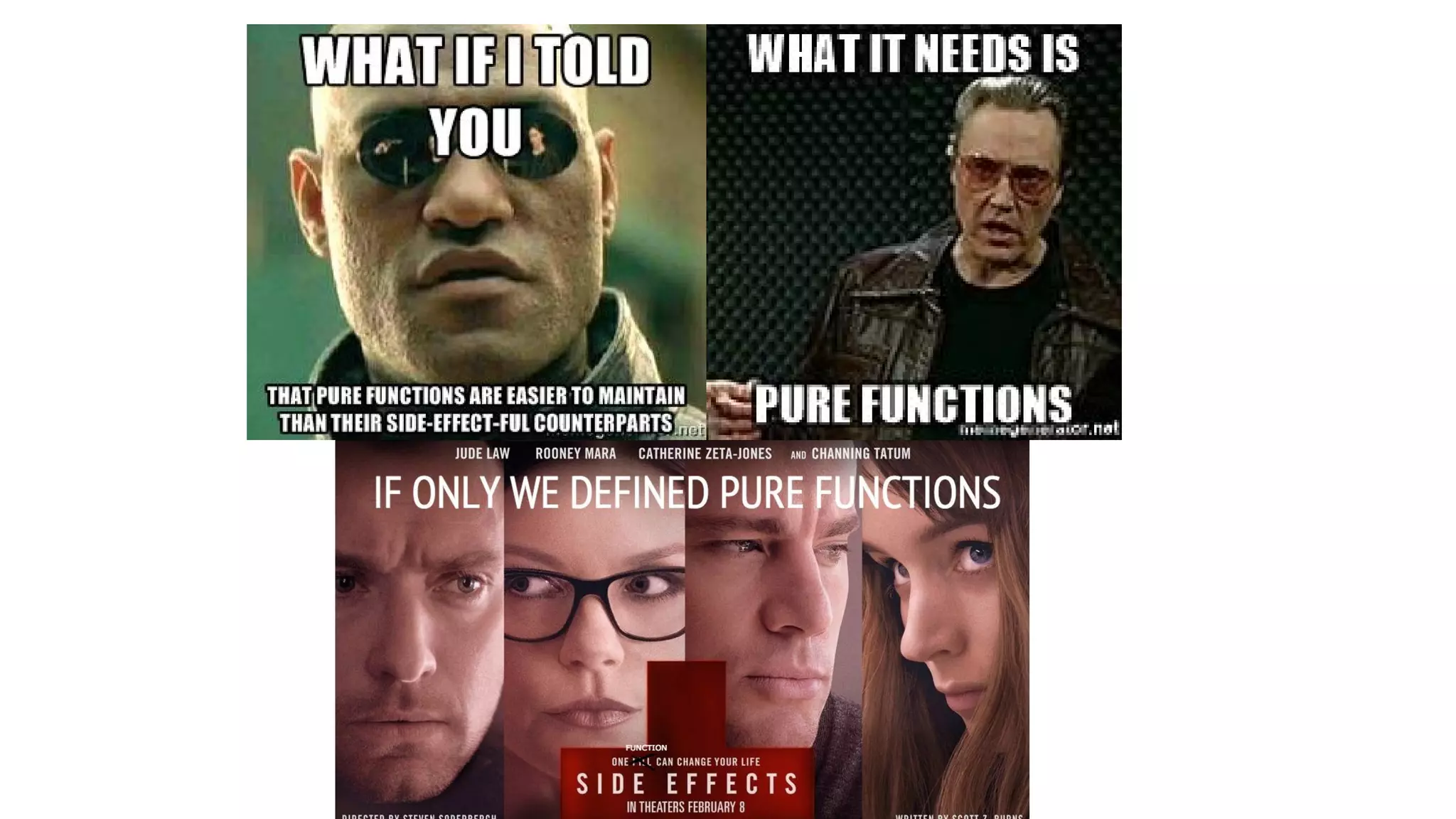
![Pure function?
(def age 20)
(defn whats-my-age [name]
(str name “: ” age))
=> (whats-my-age “Prashant”)
=> “Prashant: 20”](https://image.slidesharecdn.com/functionalprogrammingwithclojure-171025113057/75/Functional-programming-with-clojure-12-2048.jpg)
![Impure Pure
(def age 20)
(defn my-age [name]
(str name “:” age))
=> (my-age “Prashant”)
=> “Prashant:20”
Create another age...
(defn my-age [name]
(let [age 20]
(str name “:” age)))
=> (my-age “Prashant”)
=> “Prashant:20”](https://image.slidesharecdn.com/functionalprogrammingwithclojure-171025113057/75/Functional-programming-with-clojure-13-2048.jpg)
![Libraries
(:import java.util.Date)
(defn race-complete [racer-name]
(str race-name “ finished on "(java.util.Date.))
=> (race-complete “Prashant")
=> "Prashant finished on Sun Oct 01 10:03:59 BST 2017"
=> (race-complete “Prashant")
=> "Prashant finished on Sun Oct 01 10:04:48 BST 2017"](https://image.slidesharecdn.com/functionalprogrammingwithclojure-171025113057/75/Functional-programming-with-clojure-14-2048.jpg)
![Almost a lottery scam!
(defn scratchie-lottery []
(if (= (rand) 3)
"Congrats! You’re a millionaire!"
"Hahaha your money is mine!"))
=> (scratchie-lottery)
=> "Hahaha your money is mine!"](https://image.slidesharecdn.com/functionalprogrammingwithclojure-171025113057/75/Functional-programming-with-clojure-15-2048.jpg)
![Pure doesn’t always mean Idempotent
A pure function
- calling f(x) will give the same result no matter how many times you call
it. E.g. (defn add-1 [n] (+ 1 n)
An idempotent function
f(f(x)) is the same as f(x).
E.g.
(clojure.string/upper-case (clojure.string/upper-case “hello”)) => “HELLO”
(float (float 2))](https://image.slidesharecdn.com/functionalprogrammingwithclojure-171025113057/75/Functional-programming-with-clojure-16-2048.jpg)
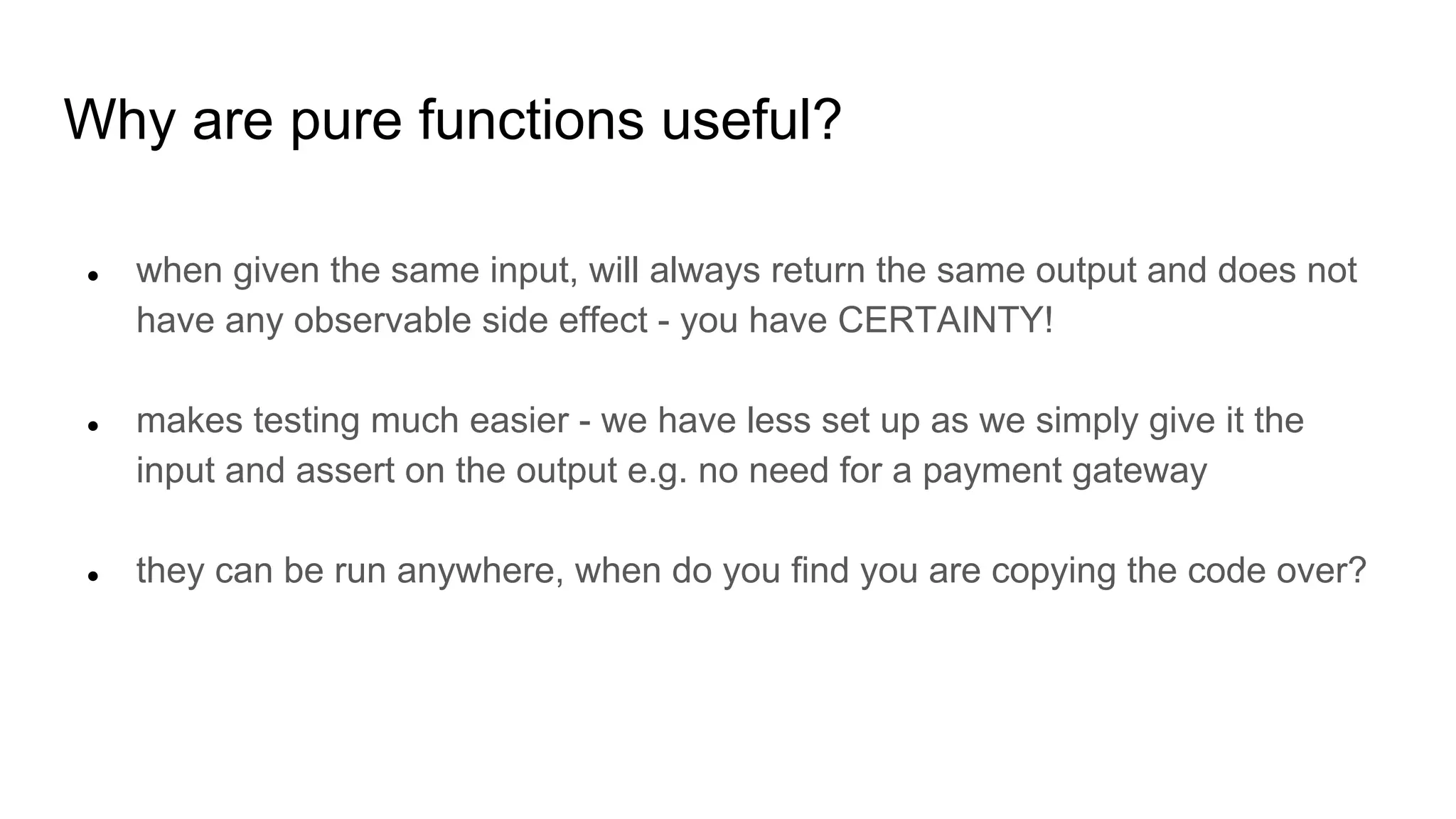
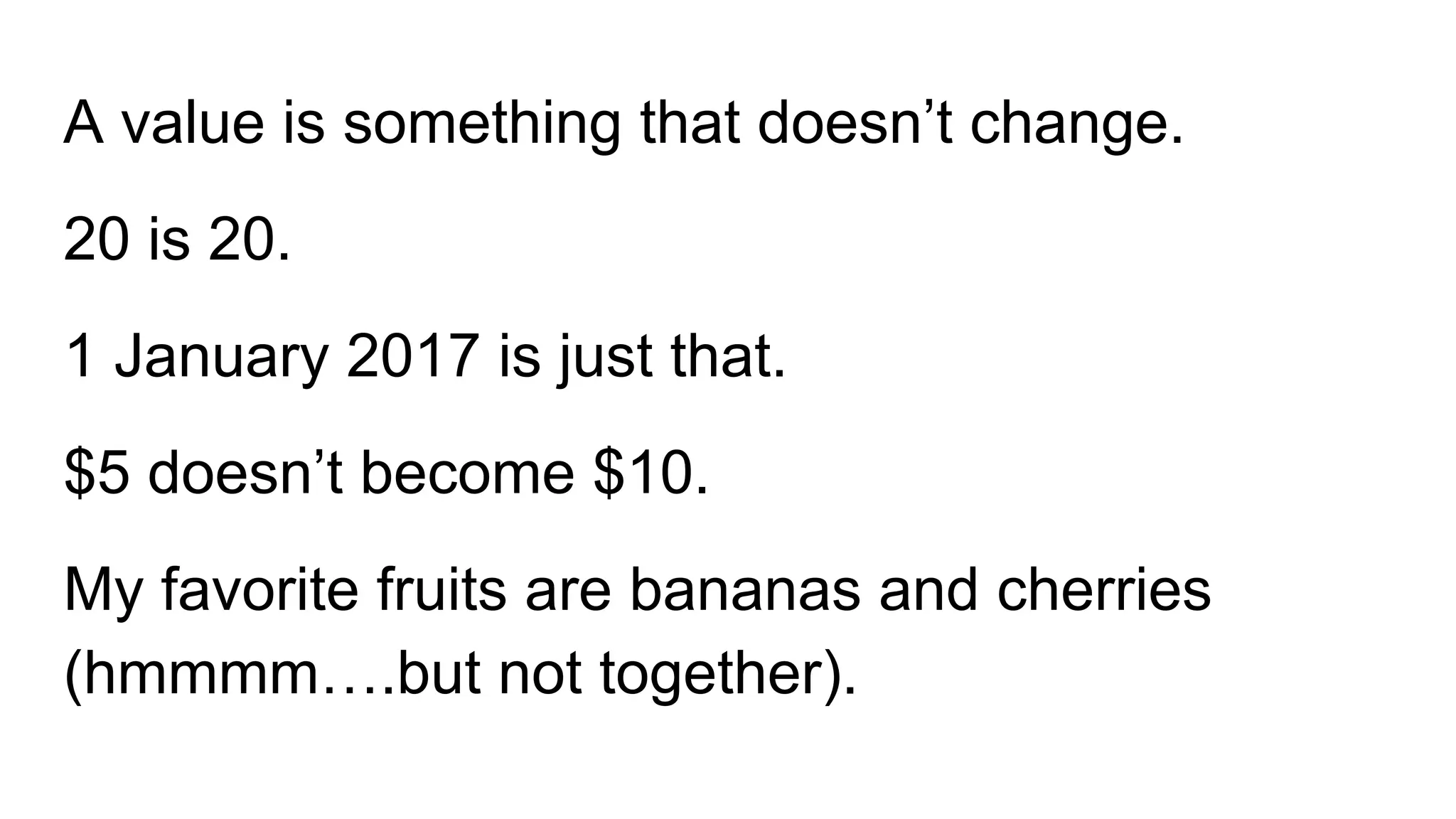
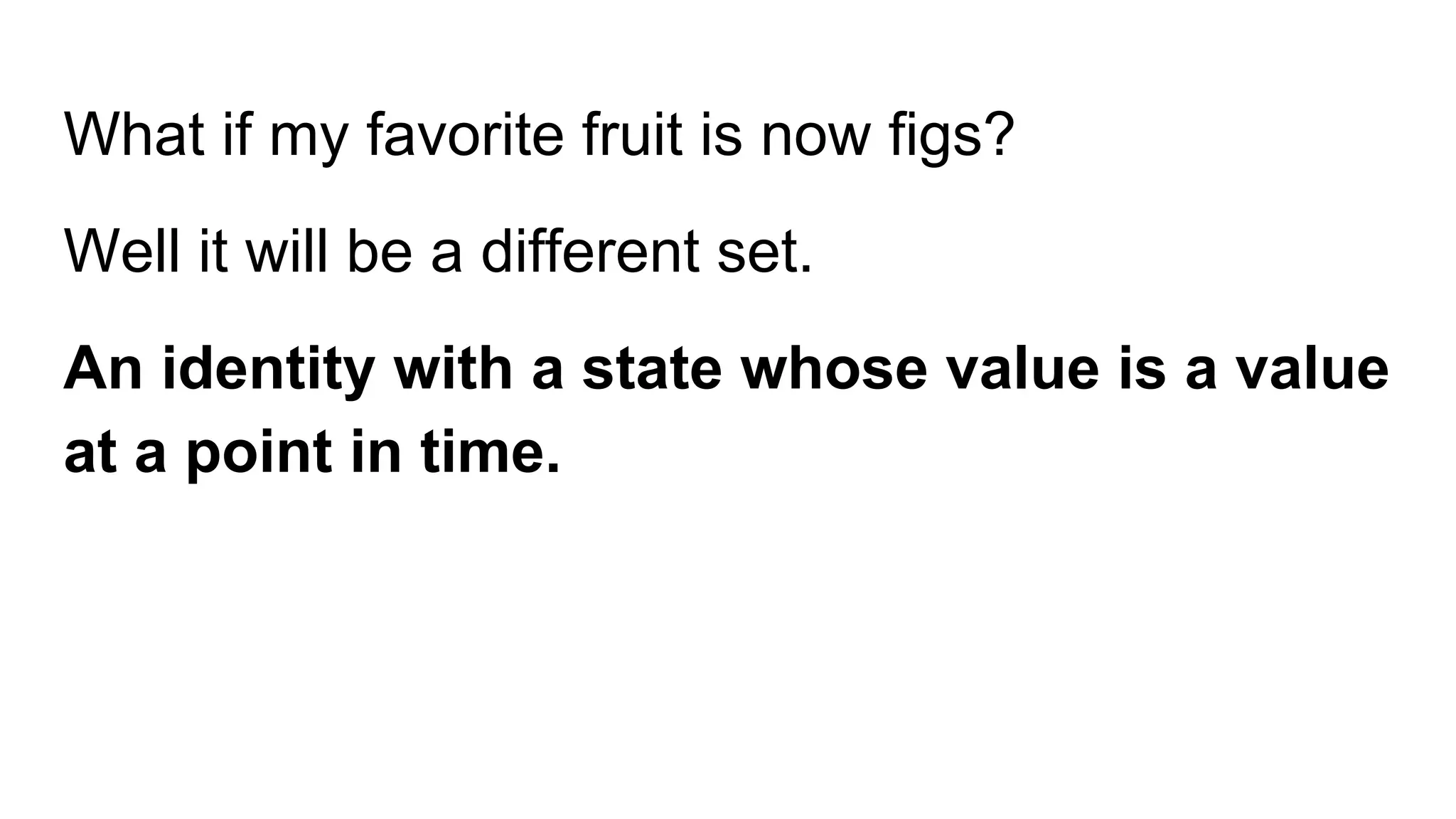

![Immutability - Persistent data structures
(list 1 2 3) => ‘(1 2 3)
(vec ‘(1 2 3) => [1 2 3] //similar to an array, zero indexed
(set ‘(1 2 1) => #{1 2} // set of unique values
(map + [1 2 3] [4 5 6]) => (5 7 9)](https://image.slidesharecdn.com/functionalprogrammingwithclojure-171025113057/75/Functional-programming-with-clojure-21-2048.jpg)
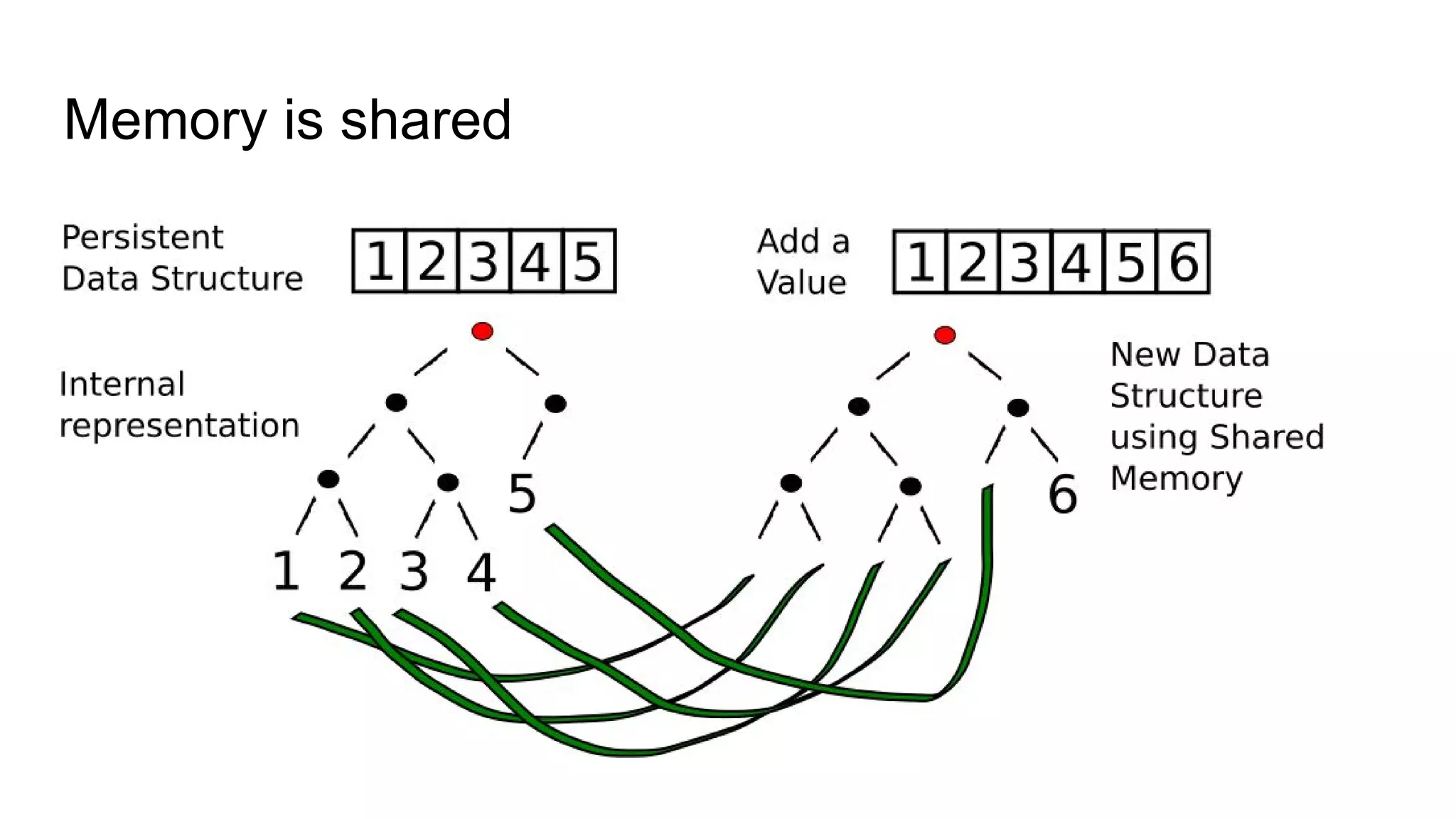
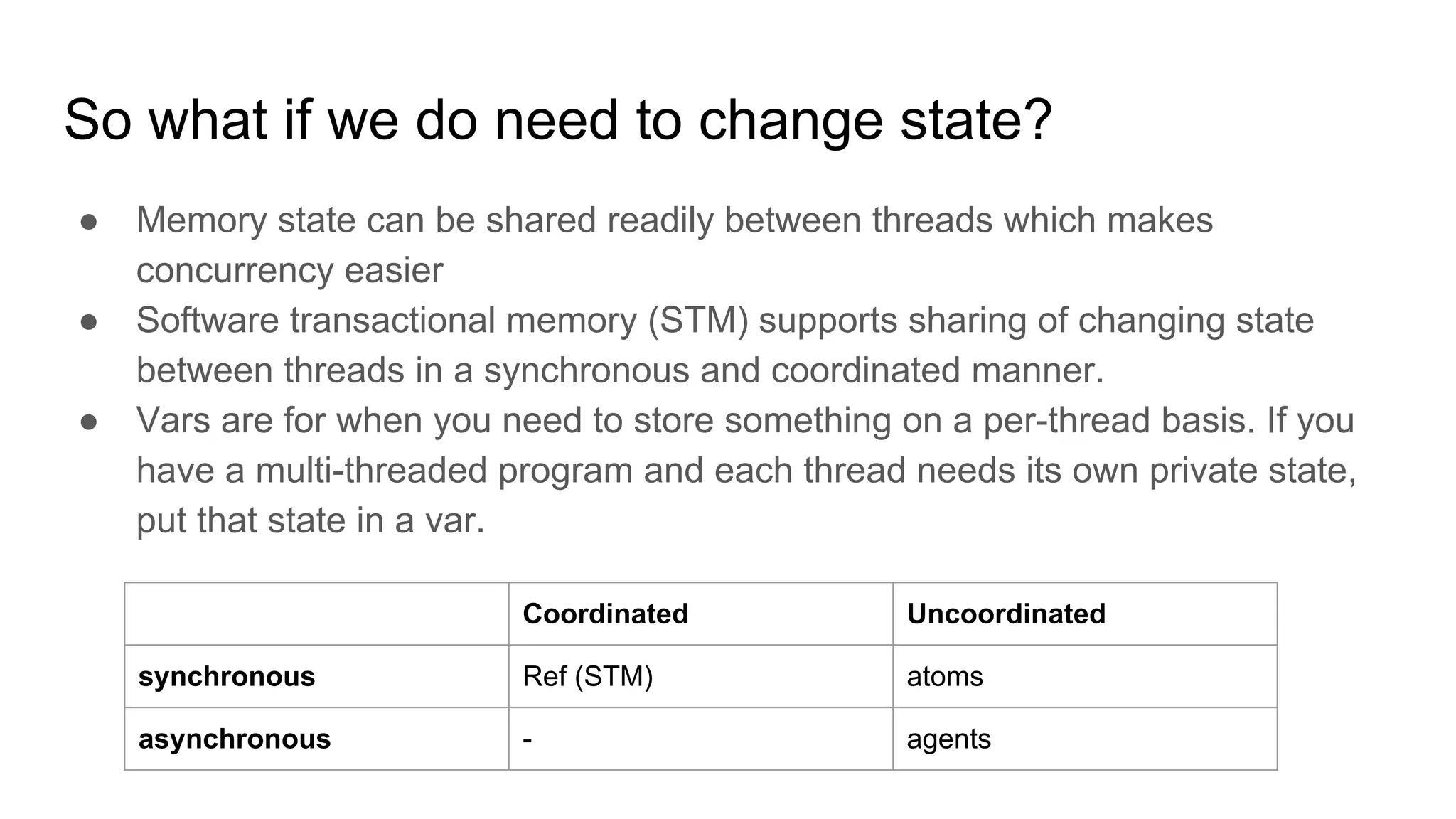
![Recursion vs tail recursion
Traditional recursive
(defn factorial [n]
(if (zero? n)
1
(* n (factorial (dec n)))))
You don’t get the result of your
calculation until you have returned from
every recursive call. Generates a new
stackframe for each call.
Tail recursion
(defn factorial [n]
(loop [count n
result 1]
(if (pos? count)
(recur (dec count) (* result count))
result )))
Processing occurs before recursive call.
Reuse existing stackframes.](https://image.slidesharecdn.com/functionalprogrammingwithclojure-171025113057/75/Functional-programming-with-clojure-24-2048.jpg)
